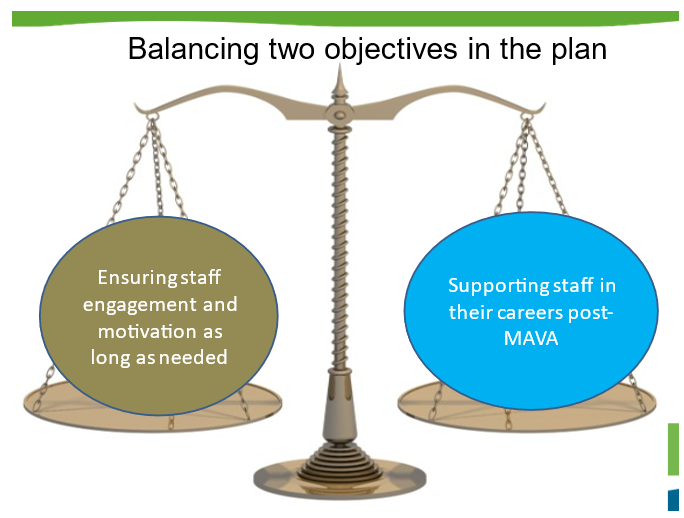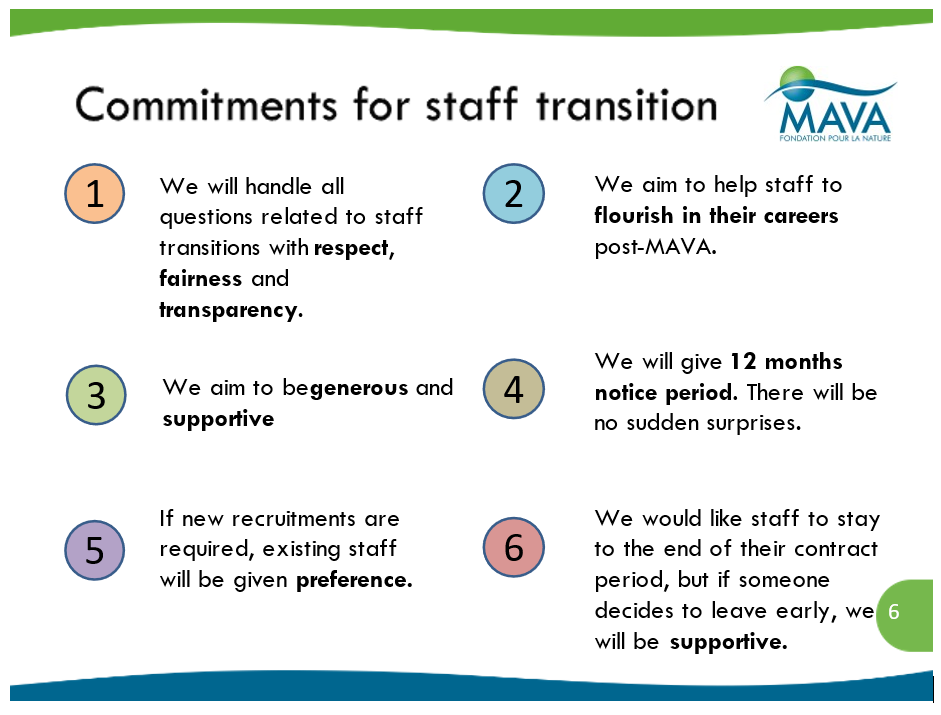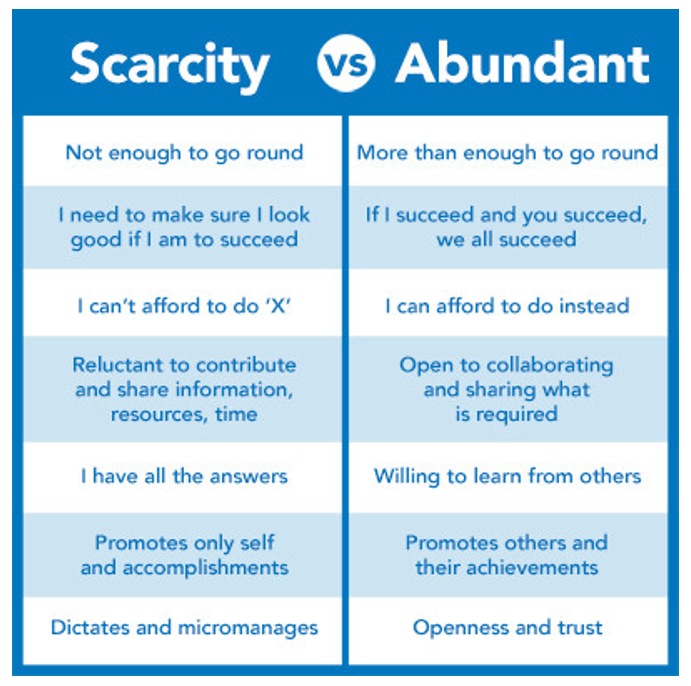Limited Life Foundations: Lessons in Managing Staff Transitions

Courtesy of Dawid Zawiła on Unsplash
As the CEO of a family foundation with a defined end date, I am frequently asked how we retain and motivate staff when everyone on the team knows their job will end in the not-too-distant future. As a leader, this is a tremendously interesting situation to manage. It takes careful thought and deft, compassionate leadership (which I aspire to but can’t claim to have mastered).
I greatly benefitted by learning from other foundations that have gone through the same thing, exchanging ideas on different approaches. In hopes of somehow paying it forward, below are some lessons from our experiences.
Lesson One: Manage the Paradox — Dual and Contradictory Objectives
Managing staff transitions is one of my key priorities from now until when we turn out the lights in June 2023. To do this we must balance two (sometimes competing) objectives simultaneously:
- Keeping staff until the end of their contracts to have the people power and institutional memory to do everything that needs to be done to close elegantly.
- Support staff to prepare for and thrive in their careers post-MAVA.

The well-being of our staff is a major preoccupation of the board of the foundation. Just as we have a full program of work to address the needs of our partners, helping them to prepare for the withdrawal of our funding, we have a parallel full program of work to help our staff with their own transitions.
As will be the case with many foundations, the staff we have are extremely mission-driven and are most motivated by the impact we have through our work. For this reason, to my knowledge, none of our approximately 20 staff are actively seeking other jobs. They are truly motivated by what we can still accomplish together.
However, we are entering what I think of as the ‘danger zone’. That is, as we approach the end, when staff may justifiably be attracted to jobs that become available with the feeling that they should seize the opportunity since there may not be another coming within the needed timeframe. This is entirely understandable since people have families to support and need to ensure their future employment in what may continue to be a difficult economic context. Even if helping staff to leave does not serve one of our two key objectives in managing the transition, we are committed to supporting staff even in these cases and making their transitions easy.
In coming to grips with conflicting objectives, I highly recommend this short article from BBC Worklife on the power of managing paradoxes.
Lesson Two: Manage Anxiety – Communicate Early and Often
A couple of years ago, when we were actively planning for our final phase of operations and discussing how best to support the sustainability of the work we have invested in over the years, there was a growing sense of anxiety amongst the staff as to what the closure would mean for them. Everyone knew there would be—and had every reason to expect—fair and generous treatment from the foundation, but even knowing that the absence of a clear plan was causing some uncertainty. And as we all know, in the absence of information, we are free to let our imaginations run wild.
To address this, we did our research with other spend-down foundations and thought through our own approach. In some ways this felt quite premature since our closing was at least five years away. But in the end communicating about the entire transition package that each person could expect completely eliminated the unease and uncertainty that was present for some. Staff were able to take this off their worry list. There was a palpable shift from ‘what is going to happen to me’ to ‘what a unique opportunity to explore what comes next, with full and generous support from my employer’.
I think one of the key anxiety reducers was our commitment to give plenty of notice for the end of contracts. There was a fear of being tapped on the shoulder one day and told their time was up. We pledged to give 12 months’ notice. While it may be admittedly hard to predict 12 months in advance what our staffing needs will be, the huge payoff is in giving peace of mind to the team.

Lesson Three: Be Creative — Lead with a Sense of Abundance
My advice to others in a similar situation is to lead with a sense of abundance. We have the great privilege of having opportunities at our disposal; with the right attitude and some creativity, everything is possible. I prefer to focus on unleashing the incredible potential within each of us. We have the support and ability to shape our futures, with a substantial package of support to do so. We remain flexible and open to new ideas that staff may come up with that we haven’t thought of before.
The package we announced to staff had the traditional measures of a generous severance and retention bonusses as well as outplacement support. Since this is fairly standard, below are some of the non-financial approaches we are taking:
- Team workshops. We hold twice a year group workshops on various aspects related to planning for our futures. So far, we have covered such topics as building a strengths inventory, learning how to activate our networks, and building our profiles (‘personal branding’). Topics are chosen by staff. We focus first on more reflective exercises and will shift into more practical work such as setting yourself up as an independent consultant/contractor or developing your resume.
- Customized training. We allocated a budget for each staff person to take advantage of training that will help them in the future careers. This request needs to fit within a plan for their future but could include building new skills or obtaining an additional certification or degree.
- Time off. Each person is allowed one day off per month starting 12 months before the end of their contract. This is for training, outplacement, or job search. In the final three months they are allowed one day per week for this purpose. This comes to a total of 24 days. We foresee being very flexible in how and when these days are taken over the year. For example, an intensive training in the beginning of the 12-month period may take more than the estimated one day per month. We all know how hard it is to both occupy a full-time demanding job and job hunt at the same time, so this allocation of days off is much appreciated.
- New titles. Some staff have been in the same position for many years but have had their roles evolve significantly in that time. Others have taken on new sets of responsibilities related to our closing. If there is a request, we are open to changing or adding a new title to better reflect the evolution of responsibilities or new responsibilities taken on. This can be of great benefit to the staff person while costing the foundation nothing.
- We offer the possibility to opt for an alternative to a severance package by funding a position for staff with an NGO for a period of time. This worked successfully in another case in a different organization I am involved with where the staff person received 1.5 years of salary at an NGO of her choosing rather than a year of severance. This resulted in a grant to a trusted partner to cover her salary and was a win-win solution. This option allows the staff to gain a foothold in a new position, test an alternative career path and extend the period of security if desired.
The table below is from this fabulous blog by Margot Andersen on leading with a sense of abundance.

Lesson Four: Explore Opportunities for Bonding and Mutual Support
Through all of our discussions about our future plans and especially at the team workshops, this has been an extraordinary opportunity to tighten the bonds amongst staff as we learn more about each other and share our dreams. They also allow us to support each other in our reflections—perhaps by giving ideas to someone unsure of what they would want to do or encouraging others in directions they may feel more tentative about. The team has appreciated this time together so much that we have organized a series of ongoing discussions with a career coach to carry on the conversations on a more regular basis so as not to lose the positive dynamic created.
Knowing more about how each person would like to be profiled also opens interesting opportunities to support each person in highlighting their skills and competencies in those areas. For example, someone interested in adaptive management may be one of the lead authors on a learning product we produce on that topic. Or someone interested in philanthropy could represent the foundation in donor groups. My vision for this is that we can all be mutually supportive in helping our colleagues pursue their future plans.
Lesson Five: Balance Equity and Flexibility
Treating people with equity does not necessarily equate to the exact same treatment for everyone. According to the Merriam Webster Dictionary equity refers to the fact that different people have varying needs of support and assistance.
Of course, it is essential to have a package that is equitable and fair to everyone. Staff would have a hard time accepting sweetheart deals for preferred staff. However, some differences in treatment inevitably arise.
One example of this is additional support for those over 50. Research shows that it takes longer to find a new job once you pass the magic age of 50. Outplacement support helps to shorten the time it takes but is not a silver bullet. We thus allow for more and earlier coaching time to help older staff think through their futures.
Another example is that some staff plan to work independently or start their own business, while others intend to find another salaried job. Their needs are not the same and we try to tailor support based on how they see their futures. For example, we allow staff who intend to start their own business to convert their allocation of outplacement support into advice— legal or otherwise—on starting their own business.
Our starting point is to provide the same package for everyone, but in the end, being fair may entail being flexible on some approaches.
I hope these lessons help you in shaping your approach to staff transitions. These reflections may also be relevant to any foundation, not only limited life foundations. I’m always happy to share more about our experiences, so do feel free to reach out to me directly: Lynda.mansson@fondationmava.org.
Lynda Mansson is the Director General of the MAVA Foundation
The views and opinions expressed in individual blog posts are those of the author(s) and do not necessarily reflect the official policy or position of the National Center for Family Philanthropy.
